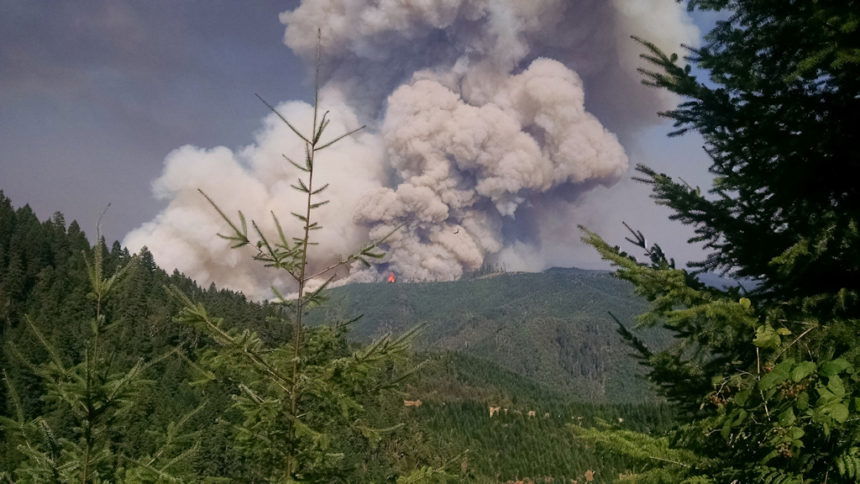Top causes of Oregon wildfires are preventable

SALEM, Ore. (KTVZ) -- For many, the term “wildfires” conjures up large forest fires in remote, unpopulated areas. And, in many cases, these “wildfires” are believed be the from lightning. The truth, however, is just the opposite.
People, and things created by people, are actually responsible for 70 percent of wildfires in Oregon. And the majority of these fires start near homes and communities.
The top three human-caused wildfires are escaped, or rekindled, debris burns; sparks or exhaust from power equipment, and escaped campfires; all of which can be prevented.
Escaped debris burns is, and has consistently been, the number one cause of wildfires in Oregon for decades. While the general cause falls under debris burning, the specific cause may result from a number of reasons: burning during windy conditions; not having adequate clearing around the burn pile; leaving the burn site unattended; rekindling days or weeks after the initial burn due to increased wind and/or heat; or not having water and tools immediately available to manage the burn site.
Whatever the reason, all of these fires can be prevented by following this simple checklist.
- Call before you burn. Local regulations may restrict or prohibit burning altogether.
- Place yard debris in an open area away from structures, trees and power lines.
- Create small piles (4’ x 4’) to better manage the burn.
- Cover portions of piles with polyethylene plastic (landscape material) to keep a portion dry for lighting later.
- When conditions improve, check with your local fire agency for any regulations in place.
- Never burn under windy conditions.
- To maintain containment, create a perimeter around the pile at a minimum of 3 feet, scraped clear to bare mineral soil.
- Keep a shovel and charged hose nearby to manage the burn.
- Make sure the pile is dead out before leaving.
- Return periodically over several weeks to make sure the pile is still out: No heat, no smoke.
Wildfires sparked from power equipment can happen when, in many cases, property owners are trying to reduce fire hazards around the home. The leading culprit in recent years has been mowing dry, cured grass during periods of high or extreme fire danger.
While hot exhaust coming into contact with dry grass could start a fire, the most common ignition source is the lawn mower blade striking a rock or other spark emitting surface.
Other equipment known to start fires are power saws, weed eaters, motor vehicle exhaust (including motorcycles and ATV’s), cutting and welding, and power lines. Keep these things in mind when working with or using power equipment.
- Check local regulations. Some activities may be restricted or prohibited due to fire danger.
- When allowed, mow grass early in the morning when moisture is present.
- Keep vehicles and other equipment in good working condition, including exhaust systems.
- Create defensible space early in the spring before the onslaught of fire danger.
While escaped campfires ranks third on our list, it does not account for the hundreds of abandoned campfires firefighters extinguish during their routine patrols.
Campfires lead to wildfires when people build them in unsafe areas, leave the site without properly putting them out, or don’t carry the proper tools to care for and fully extinguish the fire. Follow these simple guidelines when having a campfire.
- Call before you go. Campfires may not be allowed due to fire danger.
- Carry a bucket for water and a shovel.
- Campgrounds are the safest place to have a campfire, complete with open areas and established fire pits.
- Where dispersed camping is allowed, build campfires in open areas away from grass, brush and overhanging trees.
- Keep fires small and manageable.
- Put the campfire completely out before leaving or going to bed. To do so, drown the fire with lots of water from your bucket, stir the coals and drown again. Using the back of your hand, determine that the ashes are cool to the touch and won’t rekindle under warm, windy conditions.
Finally, May is Wildfire Awareness Month and fire officials from multiple protection agencies are encouraging everyone to do their part to Keep Oregon Green. Log on to keeporegongreen.org for more information.